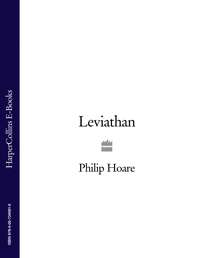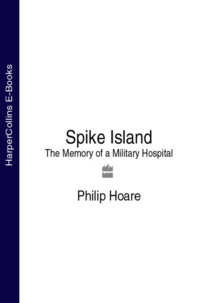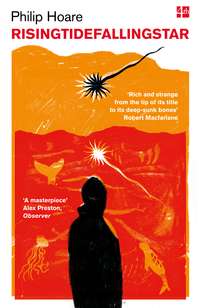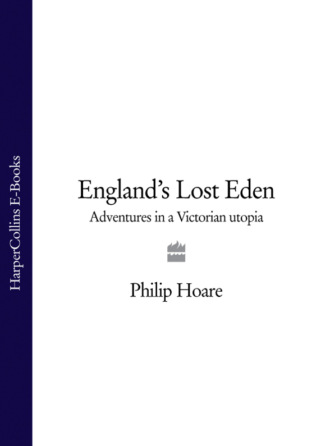
Полная версия
England’s Lost Eden: Adventures in a Victorian Utopia
Once these fields echoed to one hundred and sixty-four men, women and children speaking in tongues and dancing in ecstatic rites, living celibate, communal lives as they awaited the millennium. Now there is nothing left to show for their utopian aspirations: no buildings, no books, no artefacts; nothing more than this small plastic sign. How could the memory of Mary Ann Girling and her Shakers have vanished so completely? Surely it is no coincidence that just a few fields away, that conspiratorial tower rises over the trees, wreathed in its own dumb mystery. But as I look around me, the bare grass of the quiet Hampshire churchyard gives nothing away.
The facts of Mary Ann’s early life are equally unrevealing. She was born on 27 April 1827 in a cottage at Little Glemham, a village in rural Suffolk, between Woodbridge and Aldeburgh. It is a faintly threatening landscape of corn fields and black crows, often over-lowered by rain clouds which sweep in from the east, streaking downwards as if to suck water from the sea and unload it over the unsuspecting countryside. Mary Ann’s family, the Cloutings, lived in a cottage on Tinkerbrook Lane, an undulating country road now empty of the slate-roofed cottages which once lined it, long since consumed by the expanding fields of modern farming. But it is still bounded on one side by the estate and substantial brick mansion of Glemham Hall, and on the other by the river Alde, which widens into marshland before it reaches the sea at Aldeburgh. There, on a shingle spit, stands a pillbox-like Martello tower – the northernmost link in a chain to defend against Napoleonic invasion which stretched along the shape-changing Orford Ness and down the English coast as far as Hampshire. In Mary Ann’s time, the houses of the fishing village of Slaughden clustered round the tower; but like its outer defences, they were long ago lost to the grey-brown waters of the German Sea.
Both Constable and Turner painted this watery landscape, but in the early nineteenth century the lives of Suffolk’s ‘wild amphibious race’ were also recorded by the ‘poet of the poor’, George Crabbe, whose verse discerned the grimness as well as the beauty of this countryside and its people. Crabbe practised as a surgeon in Aldeburgh, and was addicted to opium, but later became a curate and preached in Little Glemham’s parish church, St Andrew’s, its characteristic Suffolk flint-knapped square tower rising over the land and its porch painted in gothic letters, enjoining worshippers, ‘This is the Gate of the Lord’. Inside, a neo-classical chapel and a white marble statue still bear testament to the master of Glemham Hall, Dudley North, Crabbe’s patron. Crabbe made his name in London with the help of friends such as Edmund Burke and Charles Fox; but in 1810 he wrote The Borough, and its tale of ‘an old fisherman of Aldborough, while Mr Crabbe was practising there as a surgeon. He had a succession of apprentices from London, and a certain sum with each. As the boys all disappeared under circumstances of strong suspicion, the man was warned by some of the principal inhabitants, that if another followed in like manner, he should certainly be charged with murder’. The story of Peter Grimes – who, it was implied, violated his charges – would provide Benjamin Britten with his opera. Its author – whom the Cloutings may well have heard preach in St Andrew’s – died in 1832, leaving his son, John, to become vicar of Little Glemham in 1840.
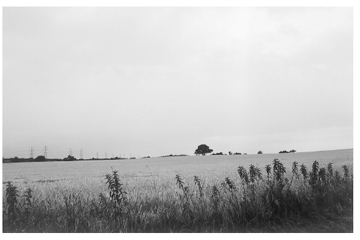
Like the New Forest, this corner of England has its own peculiarities. Its bleak, rattling coast stretches from Lowestoft to Felixstowe, passing the drowned churches of Dunwich and the ominous concrete bulk of Sizewell’s nuclear reactor which towers over black clapboard cottages that look as though they were painted with pitch. In Mary Ann’s day, the landscape was studded with windmills and church towers, a scene described by M. R. James in ‘A Warning to the Curious’: ‘Marshes intersected by dykes to the south, recalling the early chapters of Great Expectations; flat fields to the north, merging into heath; heath, fire woods, and above all, gorse, inland’. James’ eerie story, ‘Oh, Whistle, and I’ll come to you, My Lad’ – with its ghastly pursuer on the beach, ‘a figure in pale, fluttering draperies, ill-defined’ – was set on this coastline; Dickens’ collaborator, Wilkie Collins, another writer of mysteries, used Aldeburgh for his novel, No Name. And up the river Deben at Woodbridge, Edward FitzGerald, translator of The Rubiyat of Omar Khayyám, lived as an eccentric recluse, sailing his yacht in a white feather boa, eating a vegetarian diet, and mourning the death of his young friend, William Browne.
Parts of the Suffolk coast remain the least populated in southern England, yet its emptiness is as deceptive as the New Forest’s heath. In 1827, the year in which Mary Ann was born, ‘seven or eight gentlemen from London’ descended on the burial mounds at Snape, taking ‘quantities of gold rings, brooches, chains, etc’ away after their excavations; a century later, in the 1930s, a Saxon treasure trove would be discovered at Sutton Hoo, on the outskirts of Woodbridge. More recently, a mysterious circle of upturned oaks, reaching down to the watery otherworld of the ancient Britons, was found on the shore. Later, medieval Christianity produced its prophets: Julian of Norwich, the mystic and anchoress who endured ‘showings’ in 1370; and Margery Kempe of Kings Lynn who, thirty years later, was inspired by visions to renounce the marital bed, fine clothes and meat for communion with Christ. Modern science would discern other symptoms in these phenomena, but to the faithful of the fourteenth century, they were signs of a metaphysical universe.
They may have been lowly, but the Cloutings could trace their Suffolk roots back to the age of Julian of Norwich, when Wilmo Clouting was born, in 1327. In the five hundred years since, the family had barely moved fifteen miles, from the villages of Laxfield, Stradbroke and Saxmundham, to Orford – where Mary Ann’s grandfather, William, was born in 1760 – then inland to Little Glemham, where her father, also named William, was born in 1804.
Born before Victoria ascended the throne, Mary Ann came into a very different world to the one she would leave six decades later. ‘It was only yesterday, but what a gulf between now and then’, wrote William Makepeace Thackeray in 1860, looking back on his childhood. ‘Then was the old world. Stage-coaches … highwaymen, Druids, Ancient Britons … all these belong to the old period … We who lived before railways and survive out of the ancient world, are like Father Noah and his family out of the Ark.’ This often flooded corner of England was a remote, self-sufficient community in which lives were lived within themselves, as the reiteration of Suffolk surnames entered in the census and carved on village tombstones – Benham and Folkard, Todd and Barham, Girling and Clouting – suggest.
The Cloutings’ was certainly a crowded household. The first modern census, taken in 1841 when Mary Ann was fourteen, records that her father, William, and mother Emma (née Gibbs, and born in nearby Benhall), were then both thirty-five. Mary Ann had five younger brothers: John, aged twelve, Robert, ten, William, eight, Henry, six, and Charles, one; her only sister, Emma, was four. Later two more girls, Jane and Susan, would be born, along with another boy, Mark. They lived in a village of some sixty houses with a population of about three hundred, most of whose men were farm labourers like William Clouting, or blacksmiths, coachmen or wheelwrights. Like many such settlements, it had grown up in a haphazard fashion along the road, and its life centred around the parish church and its vicar, John Crabbe, the Red Lion Inn and its patrons, and the Norths of Glemham Hall; a semi-feudal existence which depended on a good harvest and the ability to pay the rent.
Yet even this rural backwater was moving into the modern world. In the ‘Hungry Forties’ of bad harvests and poverty, the People’s Charter for universal sufferage became an emblem of the stirring power of the working class. In 1845 the Chartists’ champion, Feargus O’Connor, set up small-holdings in which Shelley’s ‘helots of luxury’ could escape industrial tyranny and unemployment in a bid for self-sufficiency; at the same time, railways and new roads spread across the country and provided another network for social change. Meanwhile the Anglican church, despite a similar boom in construction, was threatened by an equivalent growth in nonconformism and a decline in belief. In March 1851, the first religious census held in Britain found that of a population of 17,927,609, fewer than half, 7,261,032, attended at Divine Service in chapels and churches; it was estimated that 5,288,294 people who could have gone to worship did not. While evangelism had touched the entire country in the 1830s, science would weaken orthodox religion. ‘It is said that in tropical forests one can almost hear the vegetation growing,’ wrote W. H. Mallock in 1877. ‘One may almost say that with us one can hear faith decaying’.
Suffolk’s own Woodbridge Reporter noted, on the occasion of the laying of a foundation stone for a new Wesleyan chapel, that the town hardly lacked the ‘means for spiritual instruction. More than a century ago there dwelt in it Presbyterians, Anabaptists, and Sabbattarians, but whether these sects had any public accommodation for performing their religious duties … does not appear.’ Other eclectic beliefs had sprung up in East Anglia, such as the New Lights and the Old Lights, still there in the twentieth century, their black-bonneted adherents walking miles from outlying villages to spend the entire Sabbath day worshipping in their chapels. There were secular sects, too, such as the vegetarian colony which flourished in Stratford St Mary, near Ipswich, from 1848 to 1851, where cultivation of the land was combined with cultural pursuits and an interest in shorthand writing. But family memory indicates that the Cloutings were being drawn to Primitive Methodism, whose itinerant ministers were particularly active here; Mary Ann’s own younger brother Mark, a wheelwright, would become a preacher.
His sister, however – now a striking young woman, ‘impetuous, strong-willing and passionate, somewhat tall, and in figure well made’ – had had little education, and was said never to have read the Bible. She spent her early adolescence in domestic service to local families, and at a house on Woodbridge Road in Ipswich; later she learned the skills of a milliner and dressmaker, working for farmers’ wives and more well-to-do inhabitants of the district. Then, sometime in the 1850s, Mary Ann met – but apparently did not yet marry – George Stanton Girling.
Three years older than Mary Ann, George Girling was born in nearby Theberton, another small village, closer to the coast at Dunwich. His parents were menial, but if a photograph of his own son is any indication, he was a handsome man, and like others in the district, probably a ‘half and halfer’ – that is, he spent part of his time working on land, and part of it as a sailor. Perhaps that is one reason why they did not wed; or perhaps their union was recognised in some other, nonconformist fashion. While George was away at sea, Mary Ann continued to earn a living by dressmaking, but she seemed restless with her half-neglected married life, and ‘went forth in search of fresh and more congenial scenes’. Some reports claim that she made a living selling brandy and other spirits, ‘which she conveyed about surreptitiously, and of which she disposed as opportunity favoured’. Perhaps because of such less reputable interludes, there are great gaps in Mary Ann’s story – not least as self-told, or relayed second- or third-hand. What happened to her in the years between her meeting George and the beginning of her mission? Did she go to sea with him – perhaps even visit America, as some have suggested? Whatever course her life took until then, it was soon to alter in the most dramatic manner possible.
By now George Girling had become a fitter in an iron foundry in Ipswich, where the family name was and is well known: a 1920s edition of the Michelin Guide to Great Britain recommends the services of Girling & Dolan’s garage, and notes that the town was renowned for its agricultural implements. The company which employed George made ploughs, while traces of local history reveal other Girlings with occupations as disparate as farm labourers, police detectives and mariners. George and Mary Ann lived close to the docks in a terraced house on Arthur Street, with other iron fitters and mariners as neighbours; their daughter Mary Jane was born there on 6 September 1853. Two years later, at nearby Fore Street – one of Ipswich’s oldest thoroughfares, still partly lined with Tudor houses and then home to dressmakers, carpenters, pawnbrokers and makers of straw bonnets – Mary Ann had a son, William, on 27 December 1855. It was only on 2 May 1863 that the couple would be married, according to the rites of the Church of England, in Lowestoft – significantly not in their home town.
But these bare facts hide another story. It was claimed that Mary Ann had lost or miscarried several other children – one account puts the figure at as many as eight. Even in an age of high infant mortality this was unusual; and for some reason Mary Ann felt she was to blame. The bitter toll of dead infants turned her against religion, and for years she avoided any place of worship as melancholy overcame her. Then one day she went to a church – evidence suggests the great docklands parish church of St Clement’s, which towered over Fore Street and the river Orwell – and there heard words which comforted her soul. Convinced that her violent temper had brought judgement upon her, she joined the congregation and became a ‘female missionary’ – although she still yielded to her sin of rage. ‘It was after one of these outbursts that the climax came.’ For Mary Ann the dressmaker, the real and the imagined were about to be sewn together in a fantastic way, and in the process her body itself would be changed.
Years later Mary Ann would describe the precise moment at which the vision came to her, at the age of thirty-two (although some accounts put her age at twenty-one, others at thirty-seven). That night she lay restless in bed – perhaps in guilt for her ‘unsubdued temper’ – and after hours of misery, rose feeling wretched and began to pray for delivery from her sin. Suddenly the room filled with ‘a flash of light, brighter than the sun’, and she heard a voice say, ‘Daughter! thy sins are all forgiven thee’.
As she watched, Mary Ann saw its source coalesce before her: a luminous figure which she identified as her Saviour by the nail-marks in His hands and feet. As she came face to face with this shimmering apparition in her Ipswich bedroom, ‘his body became more glorious and beautifully translucent, and he looked young and of a benign countenance’. Now he spoke: if she loved him, would she give up something for him?
‘What is it, Lord?’ she asked.
‘Leave the world’s ways, and give up earthly and all carnal usages, and live for me.’
‘I don’t know that I can,’ said Mary Ann.
‘Do you not love me?’ replied the Lord.
‘And as he spoke, the divine love in his countenance came from his face into her, and the rapid communication of his thoughts to her was such, that her will became his, and she said, “I will do anything for thee, my Lord.”’
And with that, the vision vanished.
Mary Ann had never felt such ecstasy before; it sent ‘a thrill throughout her organism’, filling her with love for the whole human race. Yet she kept her vision to herself, as if there was something shameful about what she had experienced alone in her bedroom. The modern world might diagnose sleep paralysis, a vivid hallucinatory state with sexual overtones, said to account for dæmonic possession from the evil spirits of the Bible to Henry Fuseli’s eighteenth-century painting, The Nightmare, and contemporary claims of alien abduction. Or perhaps, like Fuseli’s friend William Blake, she was able to produce eidetic images of what has previously been seen – in some religious tract or biblical illustration, for example – and which she saw ‘in the literal sense … not memories, or afterimages, or daydreams, but real sensory perceptions’. Or maybe hers was an epileptic fit, during which the sufferer may sense a presence in an otherwise empty room, and afterwards assert absolute moral certainty and religiosity, as Paul’s conversion on the road to Damascus has been explained. Was Mary Ann’s vision a short circuit in her brain, or was this itself a gift? Whatever the truth, for an uneducated woman of a pre-Freudian age there was only one explanation for what she saw, and what came after it.
Mary Ann returned to her duties, fired with an undeclared determination; her heart must have been bursting to speak of it, but she told her fellow chapel goers only that they must observe holy lives. Five hundred years previously, Julian of Norwich had written of her own revelation:
When I was 30 years old and a half, God sent me a sickness, in which I lay three days and three nights … my sight began to fail, and it was all dark about me, save in the image of the Cross, whereupon I beheld a common light … Suddenly my pain was taken from me, and I was as whole as ever I was. Then came … to my mind that I should desire the second wound of our Lord’s gracious gift. In this moment I saw the red blood trickle down hot and freshly and right plenteous, as it were in the time of His Passion when the Garland of Thorns was pressed on His blessed head. And suddenly the Trinity fulfilled my heart most of joy.
Now Mary Ann received a second vision, although, just as the gospels diversify in their accounts, so her story relies on different writers and her own fluctuating pronouncements; and where one claims six years between her visions, another records just days before the Spirit appeared in the form of a fiery dove commanding her,
I have called thee to declare my immediate coming, and it is now the close of this dispensation; a new era is opening on the world, and thou art to be the Messenger.
From this point, it seemed, Mary Ann’s life was determined as parable, to be replayed in situations which would reflect biblical events. The heaven-borne message echoed John’s baptism of Christ, when ‘the Holy Spirit descended upon him in bodily form, as a dove, and a voice came from heaven, “Thou art my beloved Son; with thee I am well pleased”’. Yet still she said nothing: Mary Ann lost herself in her work, afraid that a public declaration would subject her to ‘odium and opposition’. But the visions continued, more potent than ever. She was taken ‘into a realm far above the earth; and she ascended out of it, and beheld a vista of ages; and then she looked at Christ, whose glory illuminated her, and she discovered that she was in a glorified ethereal body’. In this astral experience, the Lord appeared ‘in the form of a man’. This was no dream: like Moses and Elijah appearing to Jesus, the vision was as real as she could say. Now the Bible was opened to her, and its written word revealed ‘all its truth concerning the life of the spirit within the tabernacle of the body’.
Mary Ann’s eyes had been opened, just as the scales had fallen from St Paul’s eyes. And as with millenarian prophets of the past, her discovery resulted in a literal interpretation of St John’s Revelations and its apocalyptic predictions for the end of time. Her visions told her that the Second Coming would happen in her lifetime, and that she was its Messenger, ‘to declare an end of sin, and a judgement; and, further, that if she yielded and obeyed, she should not see death … and that as a witness to her call and work, the outpouring of the Holy Ghost should be to those who believed; that they should speak with tongues, and do marvellous works; which would be the seal of her messengership’. It was a mirror of St Paul’s mission, and in order to fulfil her duty, she must leave her home and family ‘and go forth into the streets, declaring the message; and … all who believed must be prepared to do the same’.
The cumulative weight of these supernatural events proved too much for a woman’s body already weakened by miscarriage. For six weeks Mary Ann was stricken by a paralysis which twisted her mouth, as if in punishment for her ill-tempered tongue, a God-sent witch’s scold. This physical ultimatum, in her own account, also caused blindness in one eye and seized her body – perhaps the result of a minor stroke. She was faced with a choice: she could either disregard the visions and remain in this helpless state, or obey her holy orders. And so she told the Lord that He must do with her as He would. As a result of this epiphany – in its original meaning, the manifestation of a god – she immediately recovered. But later, Mary Ann would claim that the last of her visions left her with a yet more extraordinary legacy. At Christmas 1864 she received the sign for which Julian had prayed. The stigmata appeared on her hands, feet and side, erupting in imitation of Christ’s crucified body. Like some sacred statue brought to life, Mary Ann’s flesh itself bore testament to her Saviour’s sufferings. It was as if these wounds were symptoms of her death, as though she had died and been reborn without sin.
Was she a sinful woman, this sometime purveyor of illicit liquor, as yet unmarried in the eyes of the Church, now an evangelist? Records do not tell us, although the guilt Mary Ann may have felt for her children – born dead and out of wedlock – may indicate something for which she needed to atone: a recovered memory, perhaps of abuse within the crowded childhood home. Nor was she beautiful; her face was no lure to lust, and what was interbred emerged in sharp features set awry by harsh experience. Yet she was tall and imposing, with a magnetic stare; as if, in compensation for her lack of beauty, she relied on other means to command attention. There was a sensuality in the way her hair curled in dark locks over her shoulders, although her physical stance spoke against desire and her wide, thin lips bore the memory of paralysis. Her gaunt frame rejected consumption and sexuality in favour of asceticism and spirituality; a visionary aspiration in retreat from the world and its demands. In retrospect, it seems Mary Ann may have suffered some kind of dietary disorder; certainly her body was unnaturally slender. ‘The only emaciated being we saw was the prophetess herself’, one witness would note, ‘and her desperate enthusiasm would burn the flesh from any flame.’
Perhaps her passion fed on her body, exchanging the one for the other. In the process, her resolve was stiffened, as if that heaven-sent rictus were a physical reaction to or a prevention of sin, tensing her body against evil. And if she had been a sinful woman, then her sins were forgiven. Her manner, once inflexible and intolerant, was now gentle and generous. Seeing this, her newly married husband gave up his initial opposition – an acquiescence he would maintain throughout all that was to come. Mary Ann explained that having experienced the ‘perfect presence of Jesus’, it was impossible to remain with him, ‘for her spirit being once set free to enter the paradisiacal state, it was not lawful to enter the state of matrimony again’. Instead she became a bride of Christ, and returned to her chapel – only to find that the congregation refused to listen.
It is easy to imagine their reaction, faced with this woman whose duty lay at home with her children, yet who chose to lecture them on their sins. Mary Ann burned to communicate the wonder of what she had seen, and rejection merely made the fire glow brighter. Shortly after, she saw a crowd listening to a male preacher on a street corner. Someone asked her to speak, and soon, like Wesley, she had her own audience in the open air. But for Mary Ann there was something more to her commission than human history, and she was reminded of it every day by her hidden, holy scars, as if God’s words were written on her skin.




